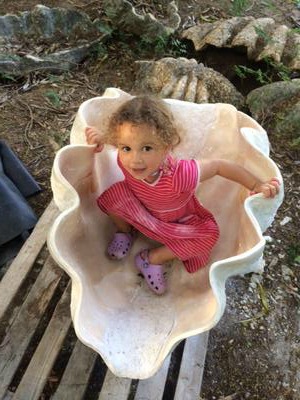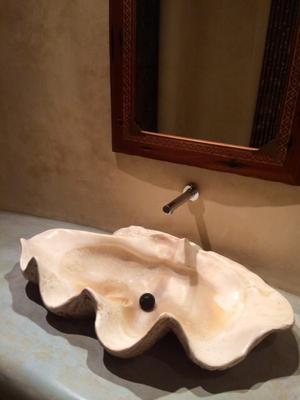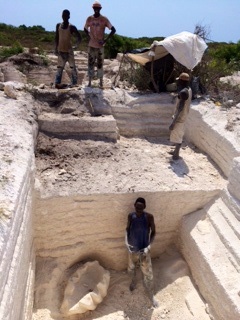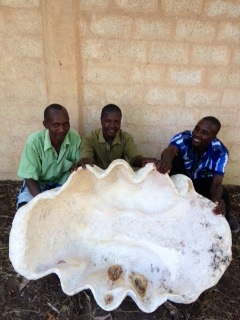Giant Tridacna Gigantea Extinct Clam Shells for Sale
 Giant Clam Shell More photos Type of shell: Fossil Giant Clam (Polished on the inside) Weight: 612Ibs! Shape: basin Size: 47 inches Color: white/beige Location of Origin: Tanzania This is one of the biggest (if not THE biggest) fossil giant clams ever found! It has been polished to perfection on the inside. Certificate: Being fossil giant clams from an extinct species (T.Gigantea) these clams don't fall under CITES regulations as do modern day's T.Gigas, hence they can be exported worldwide. A fossil certificate and documentation is issued for every clam. Price: $14,400 + shipping $750 worldwide. SOLD! |
 Giant Clam Shell More photos Type of shell: Fossil Giant Clam Carat Weight: 500lbs Shape: Basin Size: 45" Color: White/beige Location of Origin: Kenya/Tanzanian border The clam has been reinforced with metal bars to hold it together, these cannot be seen. Certificate: Being fossil giant clams from an extinct species (T.Gigantea) these clams don't fall under CITES regulations as do modern day's T.Gigas, hence they can be exported worldwide. A fossil certificate and documentation is issued for every clam. Price: $9,640 + $650 shipping worldwide = $10,290 SOLD! |

Giant Clam Shell More Photos Type of shell: Tridacna Gigantea single clam shell Weights Available: From 40-120 kg (90-260Ibs) Shape: single clam basin Sizes Available: 1.5 - 4 feet Several choices available. Let us know your desired size. Color: white/beige Location of Origin: Kenya Every clam is polished to perfection. You can see your own reflection in these clams. Certificate: Being fossil giant clams from an extinct species (T.Gigantea) these clams don't fall under CITES regulations as do modern day's T.Gigas, hence they can be exported worldwide. A fossil certificate and documentation is issued for every clam. Price: $50 per kg (ie; a 50 kg clam shell = $2,500) Shipping = $200-$400 worldwide depending on size. SOLD! |
In Kenya the Tridacna Gigantea (a predecessor to Tridacna Gigas) only exist as fossils as they became extinct during the later Pleistocene period around 180.000 years ago when sea levels suddenly increased about 20 meters. The algae that lives in symbiosis with the clam didn't get enough sunlight, hence the clam literally starved to death because it gets up to 70% from its food delivered by the algae. There are no records of any giant clam ever having been found in the sea along the East African coast, they are all but gone.


The Tridacna Gigantea was much larger (heavier) than T. Gigas, about the double weight and it is distinctly different as it's "teeth" are somewhat rounder compared to T. Gigas. The largest T. Gigas in the world was found off the Japanese Island of Okinawa in 1956 and is currently being displayed at the Natural History Museum of Dublin, weighing 300 kg. The biggest clam in my collection weighs a staggering 612 Kg, almost twice!
It needs to be pointed out that the T. Gigantea is much rarer, only 10 to 15 clams are found every month in Kenya while thousands of T. Gigas are still found in the South China Sea every month, leftovers from the meat-harvesting during the 70ies and 80ties. As such, prices are expected to supersede T. Gigas. A double T. Gigas can cost as much as 6-10000U$ while a fossil T. Gigantea was sold for 18000£ recently (28,000U$)and a smaller size fossil T. Gigantea clam (60kg) was recently sold by Bonhams auction house for 4000 U$. http://m.bonhams.com/auctions/19371/lot/3005/
The work involved finding T. Gigantea, removing them, clean and polish them takes up to 2 month but a worker gets a years salary (sometimes more depending on the quality of the clam) when he finds one. It all started off as a community project and over the years we have invested millions of Ksh into some of the poorest communities along the coastline, empowering them financially.



